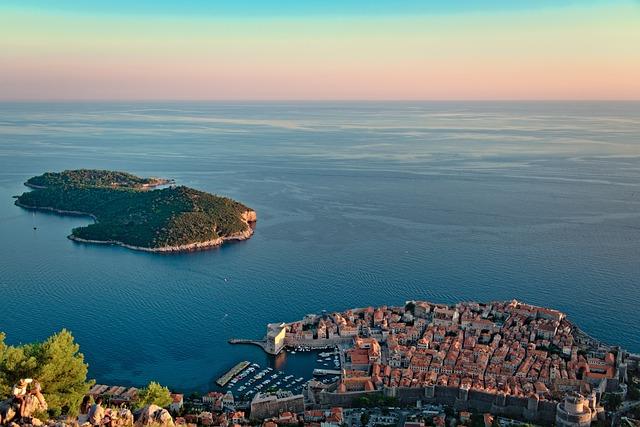As the sun dips below the horizon, casting a golden hue across Europe‘s expansive coastlines, a quiet debate simmers beneath the rhythmic lull of the waves. From the rugged cliffs of Portugal to the sandy stretches of Greece, these beaches are more than just scenic escapes; they are cultural treasures, economic engines, and ecological havens. Yet, as the tide of tourism swells, so does the question of ownership and access. Should Europe’s beaches, long celebrated for their open allure, be privatized to accommodate the growing demands of the tourism industry? This question weaves through conversations in coastal communities, government chambers, and among travelers themselves, prompting a closer examination of what it means to balance public enjoyment with private enterprise. As we wade into this complex issue, we explore the potential benefits and drawbacks of privatizing these cherished shorelines, considering the impacts on local economies, environmental sustainability, and public access. Join us as we navigate the delicate interplay between preservation and progress, tradition and transformation, in the sunlit sands of Europe’s beaches.
Balancing Public Access with Economic Gains
As the allure of Europe’s pristine beaches draws millions of tourists each year, the debate over their privatization intensifies. On one hand, privatizing these coastal gems could significantly boost local economies by attracting high-end tourism, generating revenue through exclusive resorts, and creating jobs. Such economic gains could fund infrastructure improvements and enhance the quality of life for local communities. However, this comes with its own set of challenges.
- Environmental Concerns: Private ownership may lead to increased development, potentially threatening the delicate ecosystems that thrive along the coastline.
- Public Access: Restricting access to what are traditionally public spaces can lead to social inequality, where only those who can afford it get to enjoy the natural beauty.
- Cultural Heritage: Many of these beaches are steeped in cultural and historical significance, and privatization could erode the traditional ways of life.
Striking a balance requires a nuanced approach. Policies could include limited privatization, ensuring a portion of the beach remains open to the public, or imposing stringent environmental and social guidelines for private entities. Such strategies might preserve the essence of these coastal areas while still tapping into their economic potential.

Environmental Impact: Preserving Natural Beauty Amid Privatization
As Europe grapples with the idea of privatizing its iconic beaches, a pressing concern emerges: how to maintain the delicate balance between economic gain and ecological preservation. The allure of pristine shorelines and turquoise waters can be a double-edged sword, often leading to unchecked development that threatens the very ecosystems that make these areas desirable. Privatization could result in exclusive resorts dominating coastlines, potentially restricting public access and leading to increased environmental degradation. However, with the right regulations, it might also provide the necessary funds for conservation efforts.
- Preservation of Ecosystems: Privatization could fund initiatives to protect local flora and fauna.
- Restricted Access: Private ownership might limit public enjoyment and traditional use of beaches.
- Sustainable Tourism: Encouraging eco-friendly practices could help mitigate environmental impact.
Striking a balance is crucial. By enforcing stringent environmental guidelines and promoting sustainable tourism, it’s possible to preserve the natural beauty that is quintessential to Europe’s charm while also embracing the economic benefits that tourism can bring.

Cultural Heritage: Maintaining Local Identity in Tourist Hotspots
As the allure of Europe’s coastal gems continues to draw millions, the question of privatization looms large over these sandy shores. While privatizing beaches might promise an influx of capital and improved infrastructure, it also risks eroding the very essence that makes these locales unique. The cultural tapestry of local communities, woven over generations, faces potential fraying under the pressures of commercial interests.
- Community Displacement: Privatization often leads to restricted access for locals, pushing them to the fringes of their own landscapes.
- Loss of Tradition: Traditional practices and festivals that hinge on beach access may face extinction, overshadowed by tourist-centric activities.
- Environmental Impact: Intensive development can lead to ecological degradation, impacting local flora and fauna.
Balancing the economic benefits of tourism with the preservation of local identity requires a nuanced approach. Ensuring that development is sustainable and inclusive might hold the key to maintaining the delicate harmony between welcoming visitors and honoring heritage.

Policy Recommendations: Crafting Sustainable Tourism Models
Developing sustainable tourism models requires a delicate balance between environmental preservation and economic growth. Privatization of beaches for tourism could offer a controlled environment where regulations ensure that environmental standards are met. However, it is crucial to consider the following aspects:
- Environmental Impact: Implement strict guidelines to protect marine ecosystems and maintain natural habitats.
- Community Involvement: Engage local communities in decision-making processes to ensure their needs and cultural heritage are respected.
- Economic Viability: Ensure that privatization generates revenue that benefits local economies, creating jobs and infrastructure improvements.
By addressing these key areas, we can create a tourism model that is not only profitable but also preserves the unique landscapes and cultural richness of Europe’s beaches.
Concluding Remarks
As the sun sets on our exploration of Europe’s beaches and the complex debate surrounding their privatization, we find ourselves at the intersection of economic opportunity and environmental stewardship. The golden sands and azure waves are more than just picturesque backdrops; they are vital ecosystems and cultural treasures that demand thoughtful consideration.
As policymakers, stakeholders, and citizens weigh the potential benefits against the possible drawbacks, it becomes clear that the question of privatization is not merely about ownership but about the future we envision for these cherished shores. Will they remain open sanctuaries for all, or transform into exclusive enclaves for the few?
Ultimately, the decision will require a delicate balance, one that respects both the need for sustainable tourism and the intrinsic value of public access. As we leave the beach, footprints in the sand, we carry with us the hope that future generations will continue to enjoy these coastal gems, whatever form their management may take. The tide of change is inevitable, but the course it charts is ours to decide.
































